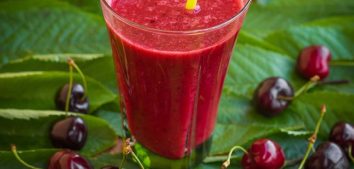
Probiotics – the road to health or a passing trend?
This article was written by Dr. Patrycja Szachta, VitaImmun Medical Center, Poznan, Poland.
Probiotics have been increasingly popular for many years now. There is a growing number of studies that confirm their positive effect on human health. Therefore, before we decide to buy a probiotic it is worth asking ourselves the question what a probiotic really is and how to apply it to achieve the health results we expect.
Probiotics – the definition
According to the FAO/WHO definition of 2001 a probiotic is a specific strain of bacteria which, when administered in adequate amounts, benefits our body.
How to choose the probiotic that’s right for me?
It is important to highlight the fact that probiotics are very different. On the pharmaceutical market, high-quality preparations with documented pro-health properties compete with often cheaper products, which unfortunately have little in common with the guidelines for probiotics. When we make the decision it is important to make sure that the preparation we we want to purchase is actually a probiotic. A high-quality probiotic will contain the bacteria described with the generic name (e.g. Lactobacillus, Bifidobacterium), species (e.g. acidophilus, rhamnosus, plantarum, bifidum, infantis), but most importantly also the strain’s name (eg ATCC 53103, W 11, LA – 5, Bb12, La – 14). The properties of the probiotic are highly strain-dependent. The properties of the probiotic are highly strain-dependent. This means that only a specific strain of a given bacterium has documented health properties confirmed in the research! In other words, not every Lactobacillus will have a probiotic effect. With a strain description, you can check (for example with the help of online medical databases) for whom a particular probiotic will be useful. If the supplement advertised as a probiotic is described only using the generic name and species of bacteria (e.g. Lactobacillus rhamnosus, Lactobacillus casei, Bifidobacterium bifidum), it is probable that it lacks pro-health properties of the microorganisms contained therein. The second option is unfortunately an incorrect description of the preparation by the manufacturer or distributor. There is still too little attention paid to the proper naming of the strains found in the probiotic preparation.
On the other hand, most probiotic preparations are registered as dietary supplements whose production, registration and quality control is associated with significantly milder guidelines compared to medicinal preparations. This may translate into the low quality of many commonly available probiotics on the market.
Another guarantee of effective probiotic therapy is the appropriate high number of bacteria in the preparation and their high resistance to conditions prevailing in the gastrointestinal tract. It should be remembered that the probiotics target is the large intestine, the final section of the digestive tract. It is here that millions of bacteria are defined as intestinal microbiota, which we support while consuming probiotics. A considerable amount of probiotic bacteria will, unfortunately, be digested in the upper parts of the digestive tract. In order for their proper number to reach the large intestine, the probiotic preparation should contain a minimum of 10 9 cfu/g. This number of bacteria in the probiotic must be maintained throughout the declared shelf life. The producer should therefore systematically control the number and survivability of the bacteria in the preparation.
To obtain the expected effects of probiotics, these preparations should be used in a targeted manner. There is no universal probiotic which “solves all problems”. One probiotic strain will effectively shorten the duration of viral diarrhea, while another one will prove ineffective in this respect, but will successfully reduce the severity of atopic dermatitis.
Specific probiotic strains have a targeted pro-health activity. Before buying a probiotic supplement, it is advisable to take into consideration which probiotic strain would be best in case of our health problems or seek help from a professional specializing in the field of probiotics.
Natural sources of probiotic bacteria
It is a common belief that probiotic preparations available in a pharmacy can be successfully replaced by the consumption of fermented milk products (yogurt, kefir, acidophilus milk) or silage, which is not entirely correct. It should be noted that probiotics contain strains isolated from the gastrointestinal tract of a healthy human, or from the vagina of healthy women (in the case of gynecological probiotics). Thanks to human origin, they are appropriately adapted to the transient colonization of the gastrointestinal tract and exerting pro-health effects. Bacteria contained in these foods, included in lactic acid bacteria (LAB), obviously are not of human origin and can not exert any action similar to the activity of probiotic strains. Silage or fermented milk products are of course an integral element of a healthy, balanced diet, whereas probiotic therapy should be based on probiotic strains with documented pro-health properties. Of course, fermented products containing strictly defined probiotic strains (eg probiotic yogurts), which can be treated as an element of probiotics, are of a different character.
The safety of probiotic therapy
The issue of the safety of probiotic therapy is just as important. Probiotic strains of the genus Lactobacillus and Bifidobacterium are generally recognized as safe (GRAS; Generally Recognized as Safe). However, it should be remembered that in some groups of predisposed patients, cases of bacteremia after consumption of probiotics have been reported in extremely rare cases. High-risk groups include immunodeficient patients, immunosuppressive therapy, anticancer treatment, and acute pancreatitis. In these situations, the selection and possibility of using the probiotic should be consulted with the treating physician.
It is clear to see that the selection of a probiotic that is of high quality and optimal for our needs is unfortunately not an easy task. It is, however, worth the effort, because properly adjusted supplementation with a probiotic/probiotics will certainly be effective in improving your health. We should remember that as early as in antiquity it was known that health stems largely from the intestine – more specifically – from “healthy” microbiota. So let’s try to keep it in the best possible condition.
References:
- Reuter G., Present and future of probiotics in Germany and in Central Europe. Bioscience and Microflora 1997, 16: 43.
- Hamilton-Miller J.M.T., Shah S., Winkler J.T. et al.: Public health issues arising from microbiological and labeling quality of foods and supplements containing probiotic microorganisms. Public Health Nutr 1999, 2:223–9.
- Saxelin M., Saxelin M., Lassig A. et al. Persistence of probiotic strains in the gastrointestinal tract when administered as capsules, yoghurt, or cheese. Int J Food Microbiol 2010, 15(144): 293–300.
- Dirienzo D.B. Effect of probiotics on biomarkers of cardiovascular disease: implications for heart-healthy diets. Nutr Rev. 2014;72:18–29. doi: 10.1111/ nure.12084.
- Lutyńska A., Augustynowicz E., Wiatrzyk A. Problemy stosowania suplementów diety zawierających bakterie kwasu mlekowego. Probl Hig Epidemiol 2012, 93(3): 493–498.
- Szachta P.: Probiotyki – praktyczny przewodnik w pigułce, czyli jasna i ciemna strona bakterii probiotycznych. Food Forum 3/ 2016











Comments No Comments
Join the discussion…